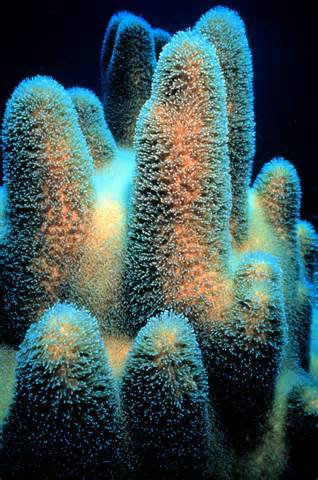Pillar Corral
Back Ground Information
|
Corral live in the Caribbean seas an the Atlantic ocean
They can reach up to 10 feet high They are brown in color and appear to be very soft |
|
Nervous System
|
The corral nervous system is different from other cnidarian and most other animals because they all seem to have some sort of central nervous chord or system to connect to while Corral doesn't. All "branches" of a pillar are considered the one animal even though they don't have the same nerve cord. Each one has its own individual correlate that detects touch from other species and that prevents coral from hitting into itself and then breaking one of its branches.
|

